Meet the roleplayers crafting new Star Wars stories in Jedi Knight: Jedi Academy
Human extras and custom missions keep the Jedi Academy universe alive.
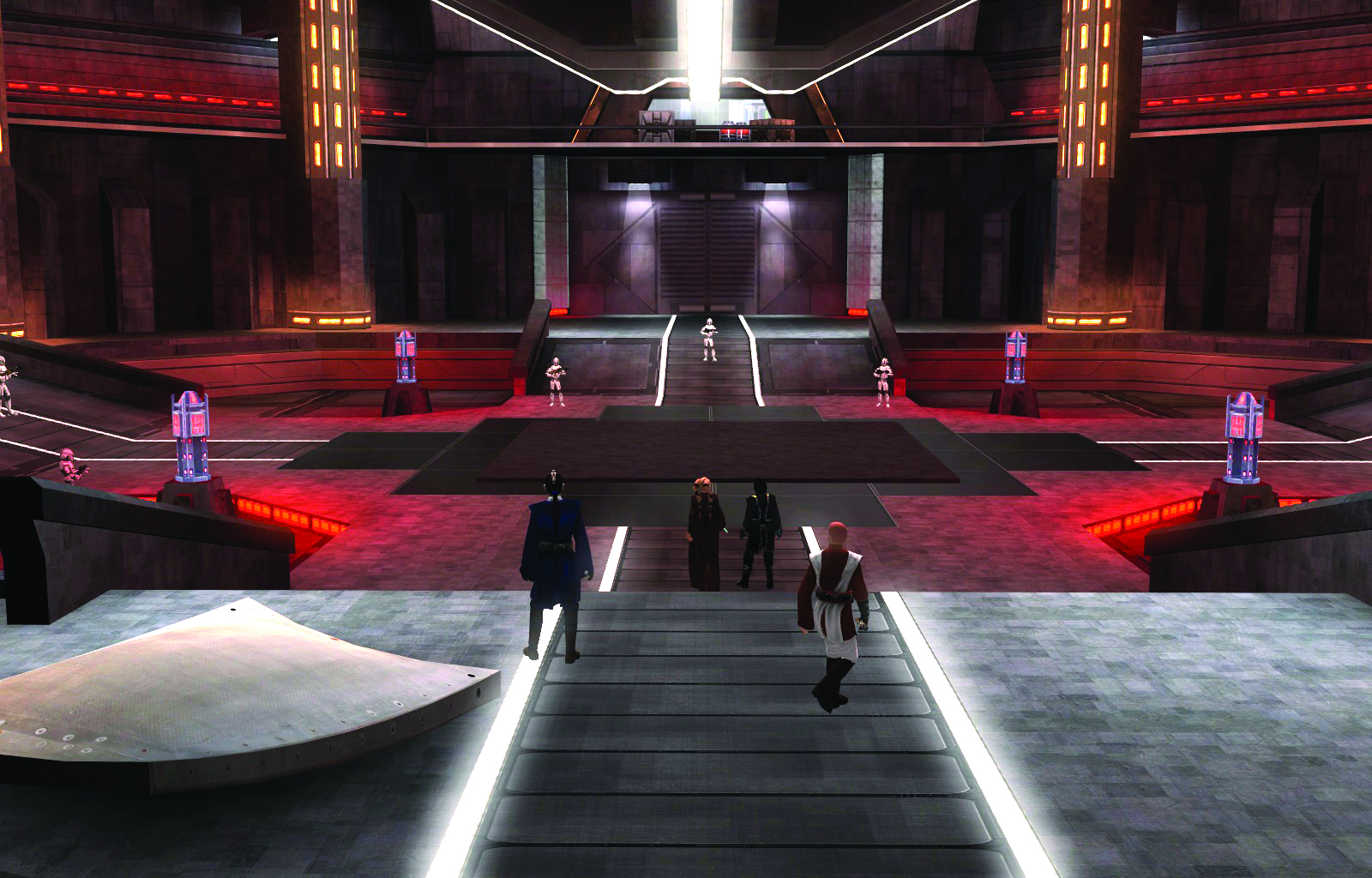
This article was originally published in PC Gamer issue 305. For more quality articles about all things PC gaming, you can subscribe now in the UK and the US.
Released back in 2003, Jedi Academy was, by most accounts, a really good game. Age hasn’t been kind to it. Try it today and you’ll notice that the graphics don’t hold up, the AI is shoddy at best, and the presentation and design are relics of the mid- 2000s. Despite that, it’s still fun—a testament to the strength of the combat, and the quality of its realisation of the Star Wars universe.
Jedi Academy is also highly customisable, with populated servers and a bustling mod scene. These are invaluable tools for one small community, called JEDI. Initially a clan of players who were skilled at Star Wars Jedi Knight II: Jedi Outcast, they transitioned to being a roleplay-focused community when they moved over to the game’s successor. Since then, JEDI has grown. The community has over ten years of roleplaying experience, and a whole unique lore created off the back of the first six Star Wars films. They’ve even made their own bespoke tools so that they can create missions, stories, and items.
JEDI’s roleplay isn’t just about having the imagination to act out a character’s behaviour in a given situation. The community makes full, scripted missions that go further than just talking about what can be done. One of the oldest members, John Mazuelos—the player behind High Councillor Cael Dan’kor—told me the story of a mission he directed, wrote, and ran.
A number of students in the community were sent to find some Jedi archaeologists who had gone missing. A whole new map was created to tell the story, and NPCs brought in. Other human players joined as extras—imbuing the story with far more human responses than could be achieved through scripting. This was a key part of why Mazuelos’ story worked so well.
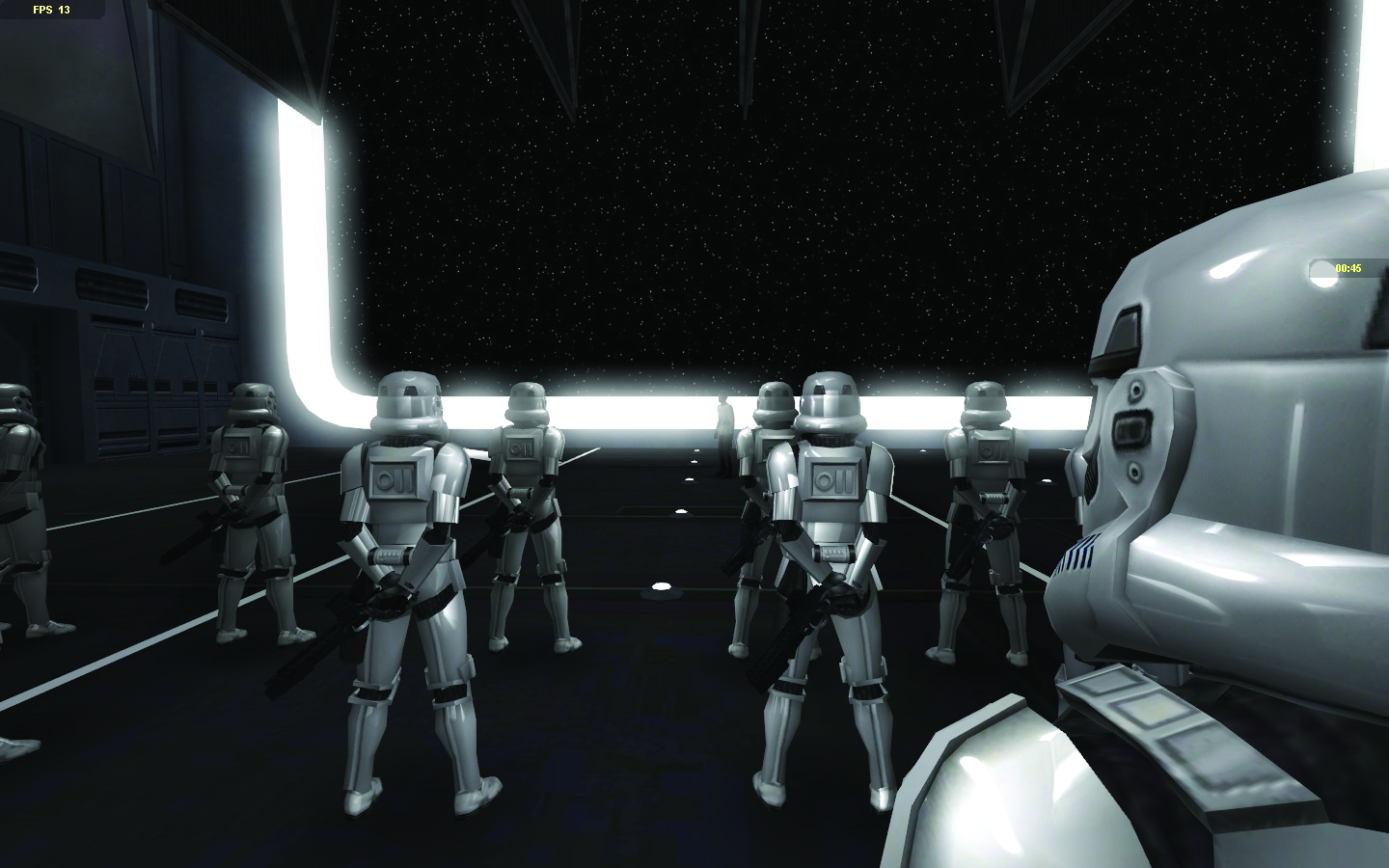
The students discovered the archaeologists had been possessed by the spirits of Sith students and teachers, as the dig site was previously a Sith school. “In order to survive, given they were vastly outnumbered and trapped, and to figure out what had happened, the students had to pretend they were Sith Acolytes and enrolled in Sith school,” says Mazuelos.
The Sith Acolytes’ personal stories were written by their individual players, while Mazuelos controlled the overall pacing and some of the direction.
Thanks to the use of special effects, extra players in the background, and a whole bunch of creativity from everyone involved, it was a far more ‘real’ mission than anything one person could write. Everyone involved was, in essence, collaborating in the creation of this adventure. The Sith Acolytes’ personal stories were written by their individual players, while Mazuelos controlled the overall pacing and some of the direction.
The biggest gaming news, reviews and hardware deals
Keep up to date with the most important stories and the best deals, as picked by the PC Gamer team.
To do all of this, JEDI has a custom mod for the game, called RPMod. The creator of this mod is Fabien Crespel, player of the JEDI character Soh Raun, and he’s been working on it for almost a full decade. With RPMod, JEDI can create entirely new weapons, vehicles and NPCs. Those who use it can also change the game’s weather patterns, add custom music, and even perform cinematic touches such as fade to black when a mission ends. It’s Crespel’s legacy to the JEDI community, and a key part of why the group is so enduring.
“It’s something I’m proud of, of course,” says Crespel. “It was my goal to empower JEDI to be what it was meant to be, to remove any barrier to the creativity of everyone here willing to RP the path of a Jedi.”
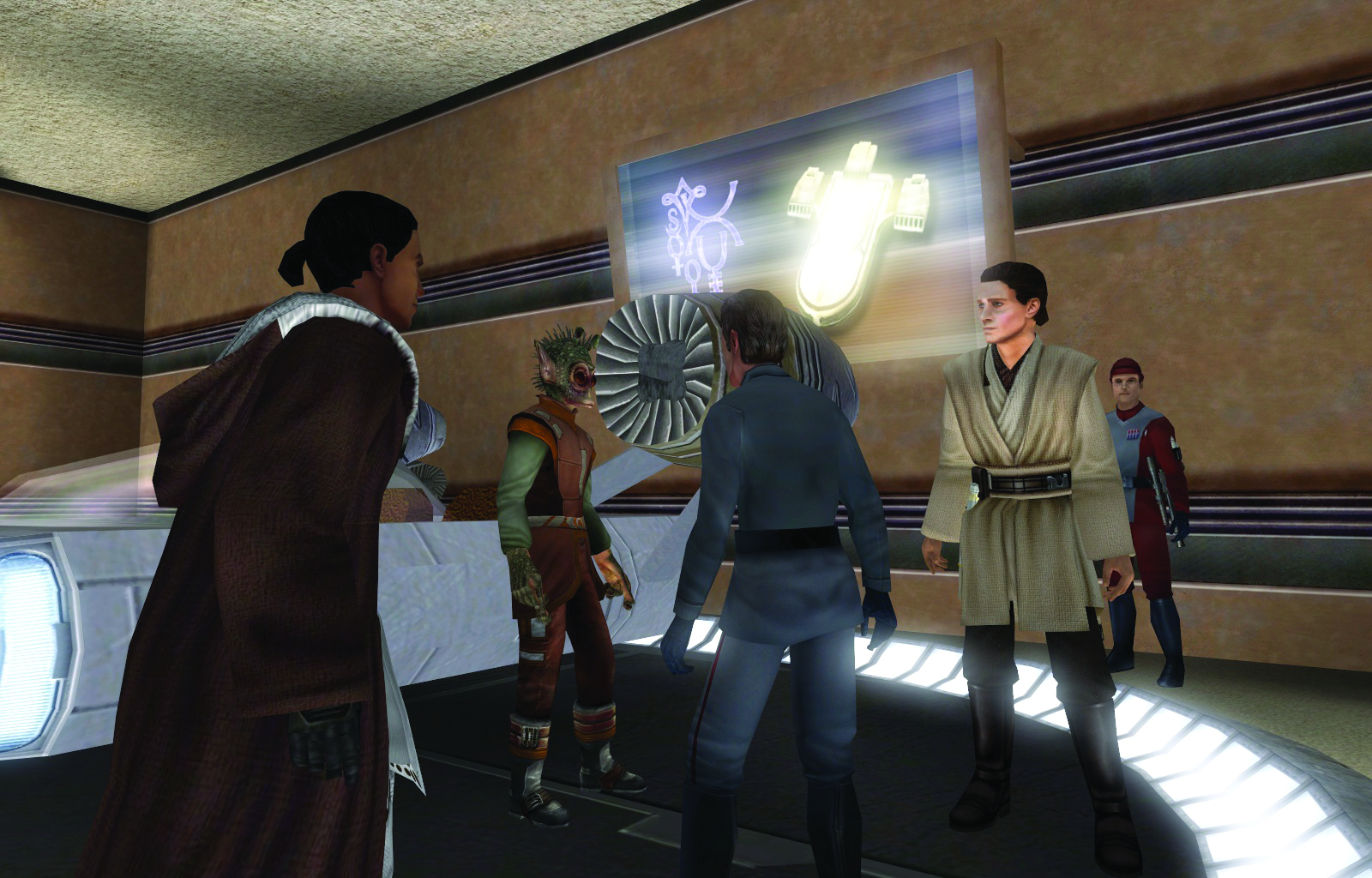
Creating these missions is a key part of what JEDI do as a community. They foster this creativity by encouraging players of all ranks to come forward and submit stories, plans, and so on. A lot goes on behind the scenes—news posts get uploaded to the website informing players of when major missions will happen. Extras are given scripts, and those running the mission spend time setting the scene like a theatre stage.
One of the people who runs many of these missions is Matilda Lambert, and her character Wrennin Vae. Not all of the missions are on a large scale, and she let me tag along on a story designed for one of the community’s young Initiates.
The Initiate was asked to travel to an outpost in a remote tundra—answering the call of locals who’d requested help from the Jedi order. Lambert plays one of the locals, and, after meeting up, the two trek over the tundra, towards the outpost, where they find a frozen-over box they must open. They complete the task, but heavy snowfall forces them to camp out in a nearby cave for the night. While camped, another local ambushes them. Lambert’s character calms the Initiate, explaining that it was all a prank.
Not every mission is a major part of the grand space opera. Here, the Initiate was being tested on some basic problem-solving in opening the frozen box, and on remaining calm and Jedi-like when something unexpected happens. It was designed to be a learning experience. In JEDI, it’s not always about being the big impressive hero who saves the day. This was a small, personal (and often quite funny) story.
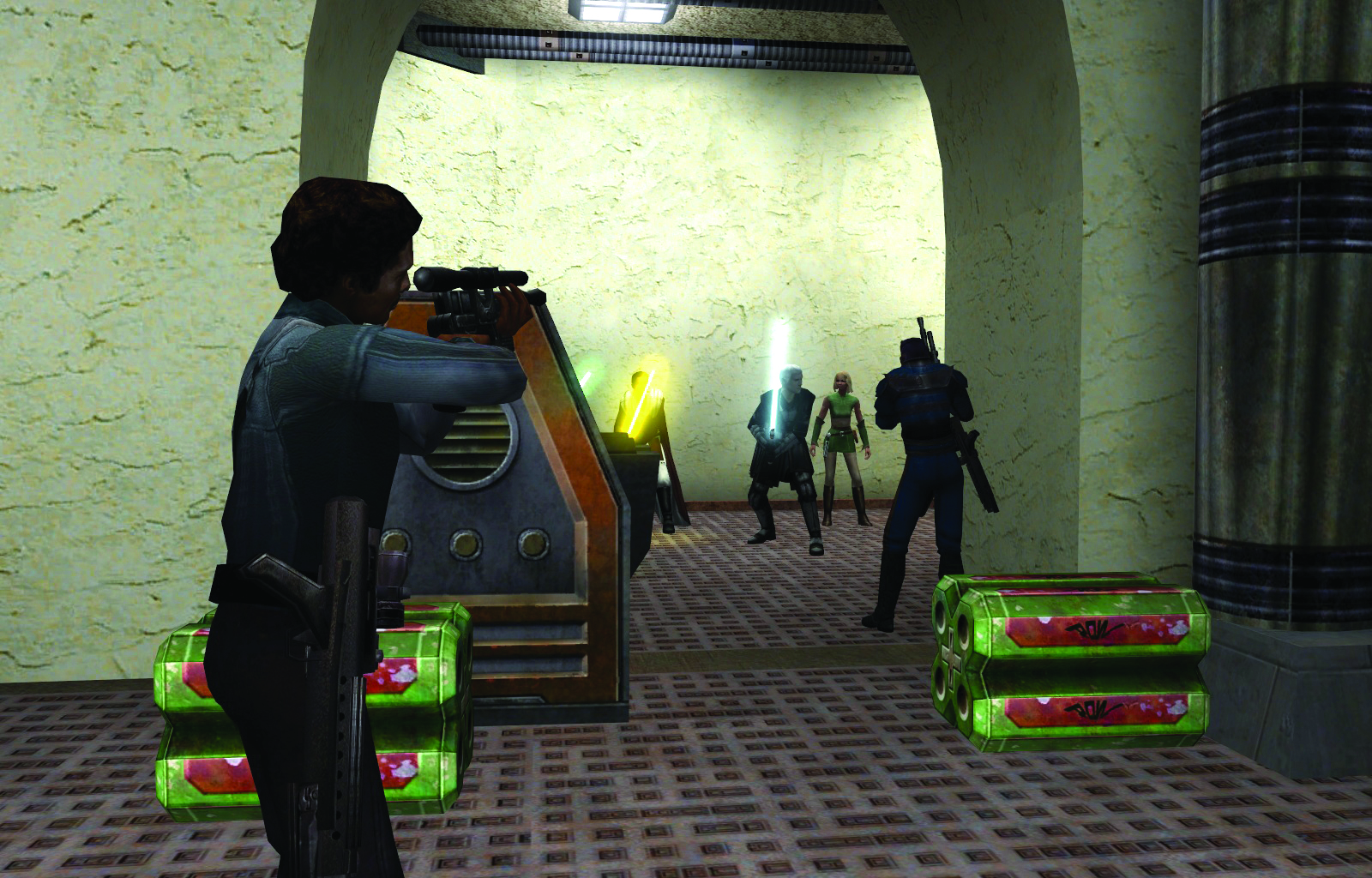
The mission will likely never be repeated. Even if it was, the roleplaying element means it would never happen in the same way twice. The story arcs of old will never be available to replay, but they are passed on. Current Jedi Knights will tell the stories their mentors told them, and new Initiates will discover JEDI’s history through its website’s archive. The community is in a constant state of moving forward, of generating new stories and forging new paths.
Over 13 months, 23 individual key missions were played. Some were heavily scripted, forcing players along one path. Others let players make decisions that would change the dynamic of the entire galaxy.
While many stories are one-offs, sometimes JEDI will put together arcs that allow members to take part in an episodic adventure. The most recent of these was a year-long story, in which a plague caused an epidemic across the galaxy—wiping out branches of the Jedi Order, and facilitating a Sith uprising in certain areas. Over 13 months, 23 individual key missions were played. Some were heavily scripted, forcing players along one path. Others let players make decisions that would change the dynamic of the entire galaxy. Some planets resisted the Sith uprisings, others did not, and there are now maps that show the changes to the political power structure.
Some missions are lengthy, too, matching the duration of an average full game. Lambert tells me about a mission that took eight hours to complete, with a rotating cast of actors and extras that helped students learn key concepts about the role of a Jedi in the universe. It was a huge commitment from everyone involved, and it ended up being a massive success. It’s one of the missions that those who took part still talk about to this day.
Part of what makes the community special is how it tries to instil values. This is a Jedi Order that trains Initiates and Padawans, both in universe and in play. Older members mentor younger ones, enforcing a positive atmosphere that emphasises people helping each other. Mazuelos pulled back from being a leader of the community so that he could focus more heavily on mentoring.
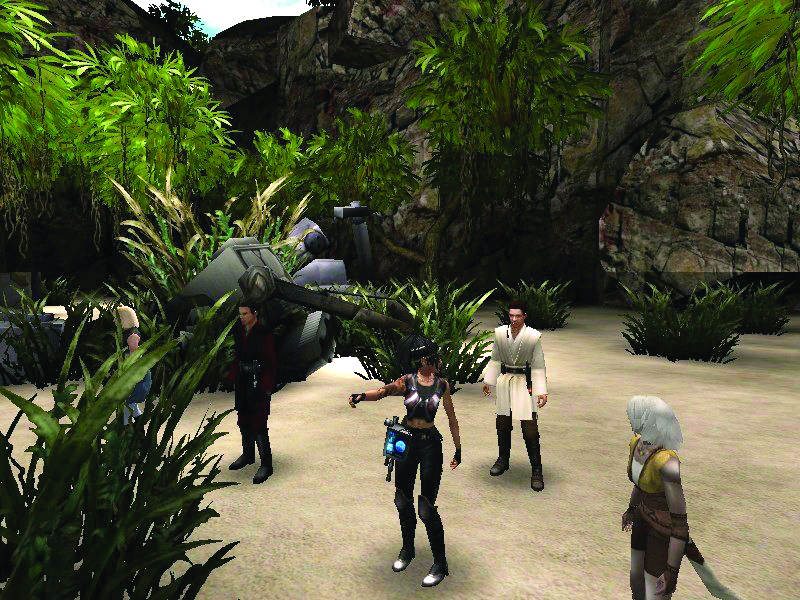
“You watch over them in the beginning, to teach them what to do and how to do it,” says Mazuelos, “but then slowly ease off so that they can make their own decisions and show their true colours. And you try to make them feel like their character becoming a Jedi was an adventure, and that it feels like an ending to a really good story once they are knighted in a grand ceremony.” Whenever a Padawan is knighted, the community is brought together. They’ve got a special area for these ceremonies, complete with custom music. Most of the community is expected to be there. Together, they celebrate the character’s growth as a person, and the growth of the player behind that character.
Despite the intimidating nature of a decade-old roleplay community playing a 14-year-old game, the community does uphold a positive and relaxed atmosphere. “When I arrived I was a bit like ‘uuhhh, whatever, it’s just people standing around hitting each other with lightsabers,’” Lambert admits. “But I’ve actually met some really great friends through this and it’s been a nice place to just express yourself.” JEDI is an inclusive community, and one that encourages creativity in all its members.
With its opportunities to make new things and try out original ideas, there’s no better platform for the community than Star Wars Jedi Knight: Jedi Academy. The ability to do just about anything they want, coupled with over a decade of stories, characters, and friendships, means JEDI will continue to be active for some time. As Mazuelos puts it, “We’re just a bunch of people who really like Star Wars and want the freedom to make Star Wars ours.”

